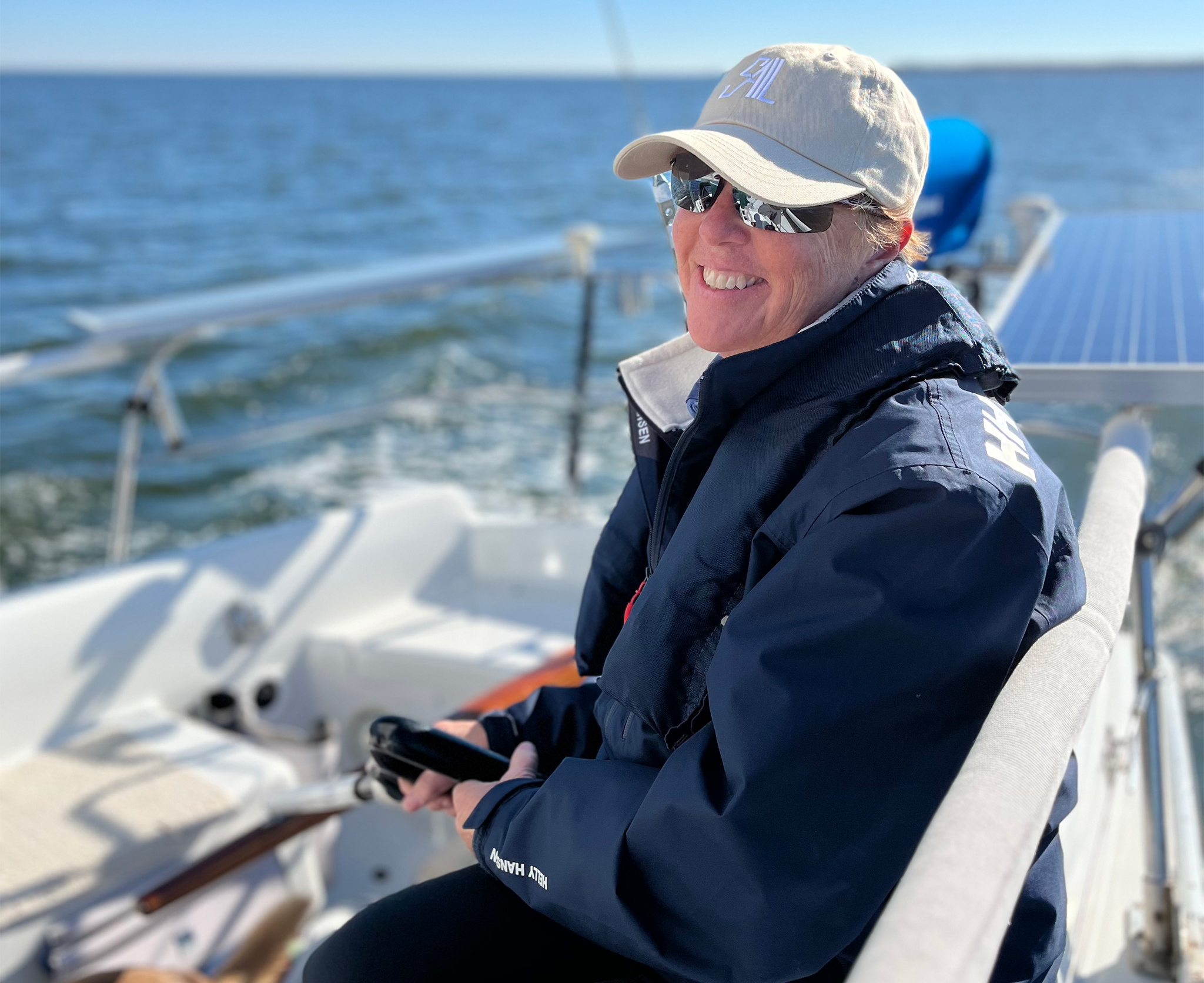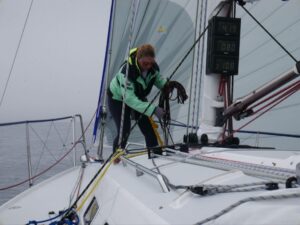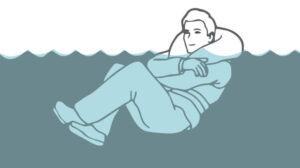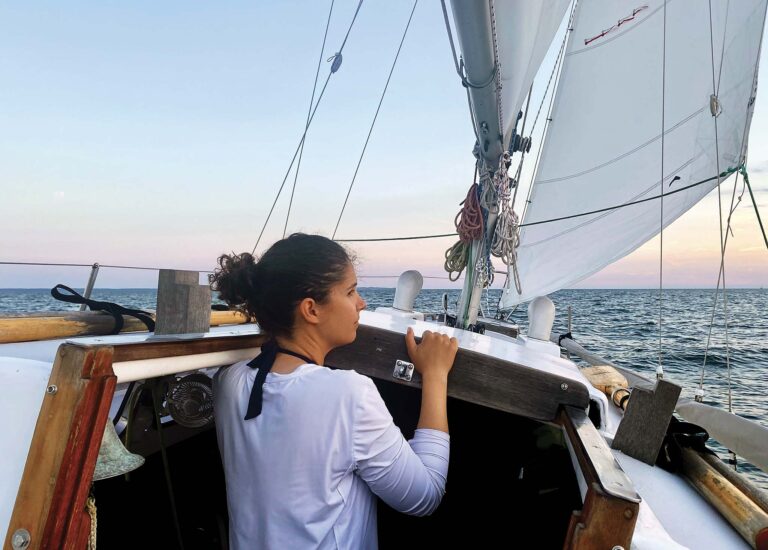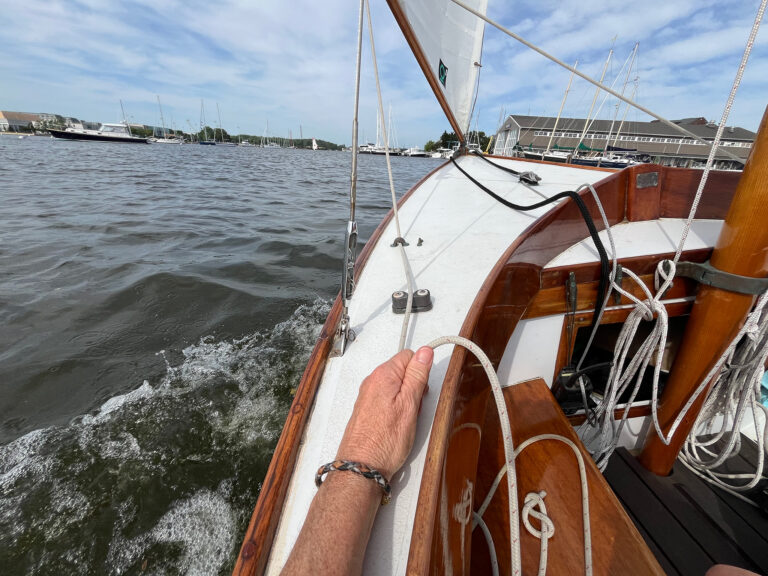“Are you ready.”
The question came without a question mark at the end, the warm but no-nonsense eyes of Jonathan Kabak looking straight into mine.

“I think so?” I answered, hearing the hesitation in my answer. I was standing beside the deep end of a U.S. Naval Academy swimming pool, kitted up in new foulies, new seaboots, and a lifejacket I’d never used. I had one hand on the manual inflator tab—because, as Jonathan had pointed out, if you’re going in the water, you’d want to know right where that is, just in case the self-inflating mechanism fails.
I had questions.

Like, will the inflator work? If it doesn’t…these new boots…will I sink like a streamlined brick? Are they going to have to save me in front of all these other people? Will I freak out when I go under at that first jump? What will all this feel like? In all my time sailing, I’d never had to find out.
Jonathan, chair of the Moderator Working Group of US Sailing’s Safety at Sea Committee, and captain of the sail training ship Oliver Hazard Perry in his day job, had doubtless seen these questions and more racing through students’ minds about a thousand times. He quietly asked, “What is concerning you?”
“New boots? Not sure what will happen?” But, I decided, that’s what I’m here for—to try to get a sense of what will happen. “Ready.”

And I stepped off the pool deck, plunged down, and burst back to the surface, the pillows of the inflated vest doing their job and keeping my head well above water. He helped clear a snag at the back of my vest, then I started learning how to paddle around with all this stuff on (the boots were great—warm, buoyant, and easy to swim in), use the valve to adjust the vest’s inflation, and get more or less comfortable as I waited for the rest of the class to take the plunge, after which we would all move on to flipping a liferaft upright and learning what it feels like to haul up into one and be inside.
In a perfectly flat, calm, indoor pool. With strapping young Navy lifeguards and teachers like Jonathan standing by.

I didn’t find it too hard to walrus in, thanks to two classmates already helping me. (Who goes in the raft first? The people or person most able to help others in.) But even in that setting, jammed into what the resident medical expert called the “floating vomitorium” with seven other people for a total of maybe five minutes was enough to make me never want to be in a situation where I’d have to use one in anger. (Later, I read a report of the sinking of the replica ship Bounty in Hurricane Sandy, and the survivors said that in the violent conditions after they abandoned ship, it took as much as one hour for each of them to get into the liferaft. Most were wearing bulky survival suits, and all were already exhausted even before they went into the water.)
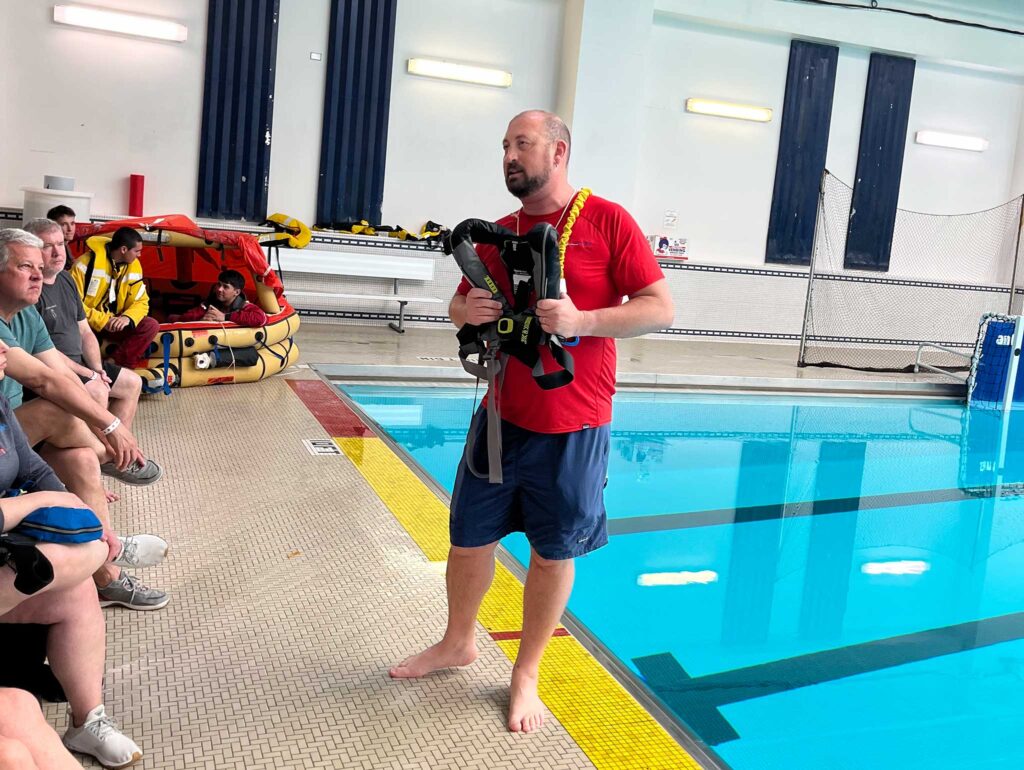
For my group attending US Sailing’s Safety at Sea seminar in Annapolis, presented by Navy Sailing and the Marine Trades Association of Maryland (MTAM) last weekend, the pool exercises were the last piece of two days of intense continuing education as sailors. It was the 43rd Safety at Sea seminar in Annapolis, with 17 instructors teaching 158 student sailors.
We learned about weather, damage control strategies, storm sails and heavy weather, emergency medical care, seasickness, communications, firefighting—all with real-life examples that gave us fresh eyes. For instance, it’s good idea to stash a pair of fireproof gloves aboard, so if your cell phone’s lithium battery catches fire, you can heave it overboard quickly; there’s no way to put it out, and a fire can double in size in 30 seconds. And, you know what’s a great way to stop a leak? Wax toilet ring sealing material—this tip came from SAIL’s Technical Editor Adam Cove, who also led a hands-on damage control class that included setting up a jury rig.
After instructors explained in class the sailhandling required for maneuvers like the quick stop to retrieve someone overboard, members of the Navy Sailing team executed the real thing on the Severn River in Navy 44s. The highlight was watching a U.S. Coast Guard MH-65 Dolphin helicopter approach a Navy 44 with a simulated medical emergency requiring evacuation, hovering just over the mast, and lowering and then retrieving a rescue swimmer and basket. (In case you wondered: Stash everything loose below, before the helo is overhead, because the vortices of hurricane-force winds can suck a piece of gear upwards into the rotors and, as USCG Lt. Cdr. Kellen Browne, MH-60 pilot, wryly noted, “Our time working with you will have concluded.”)

By the weekend’s conclusion, I’d earned the International Offshore Sailing certification required for some crew in offshore races. More importantly, I gained a new perspective about safety; you can’t buy it, you can never stop learning more about it, and—another Jonathan mandate—your fingerprints should be all over your safety gear. And, I walked away with a new measure of confidence about aspects of sailing—offshore, coastal, or even in my home Chesapeake Bay—that sometimes felt intimidating.
So next time when someone asks, “Are you ready,” I’ll be a lot closer to being able to say, yes.
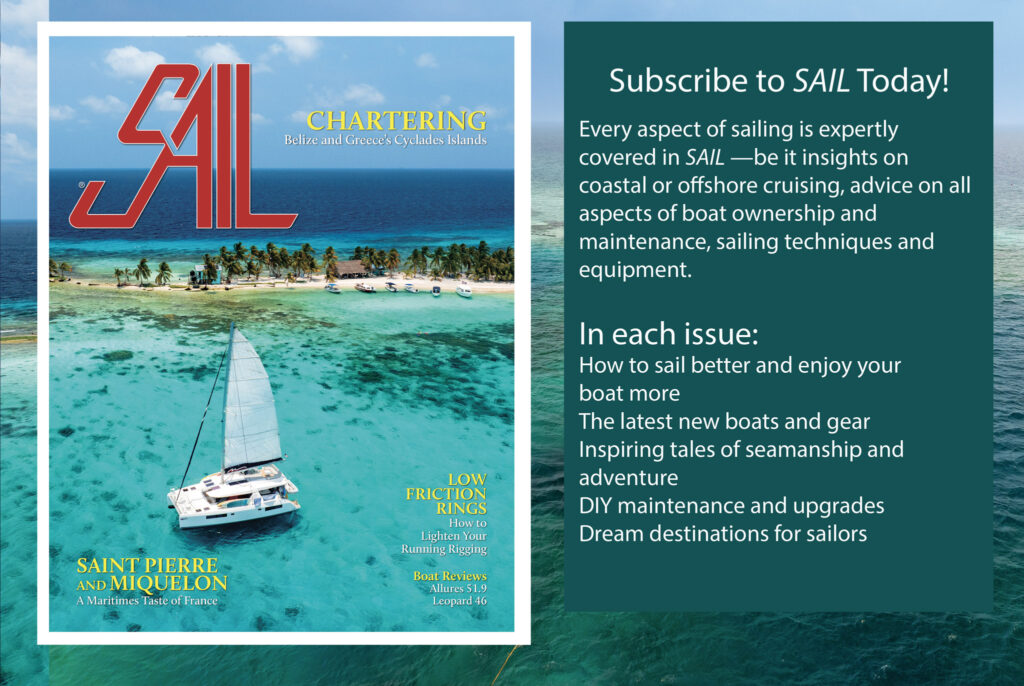
April 2025

